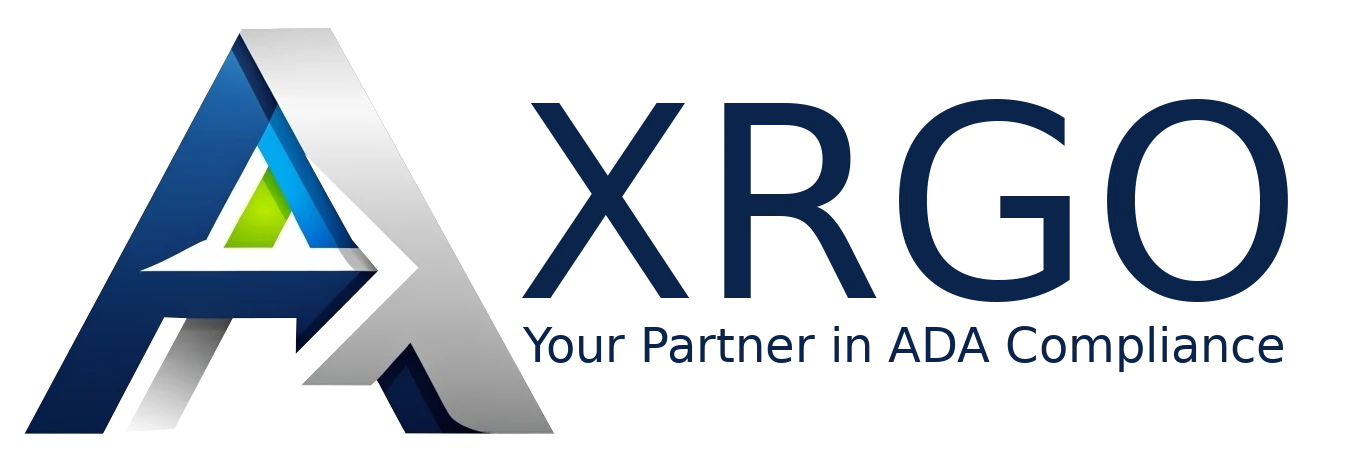In the past, U.S. car dealerships won customers through traditional advertising—TV spots, radio, print, and location. Today, the real competition happens online. This article examines why a dealership’s website has become its most powerful sales weapon and how five strategic pillars—design, speed, ADA compliance, SEO, and content—determine who wins the digital battlefield.
It explains how modern car buyers begin their journey online, often making critical decisions before ever stepping onto a lot. Dealerships that still treat their websites like static brochures are being quietly overtaken by those who treat them like high-performance command centers. Each pillar is explored in depth, showing how it directly impacts visibility, trust, lead generation, and long-term competitiveness.
The piece concludes with a clear message: the shift has already happened. Dealerships must adapt now or be left behind.
For most of the 20th century and well into the early 2000s, the car dealership’s marketing playbook was straightforward: spend big on traditional advertising and wait for the customers to walk through the door. Whoever could shout the loudest on TV, blanket the radio waves, and plaster the most billboards along busy highways usually came out ahead. It was a local game, and the rules were clear.
But over the last two decades and especially in the past five years, the battlefield has fundamentally shifted.
Today, car buyers start their journey online. They’re not waiting for commercials or newspaper ads. They’re researching vehicles, comparing financing options, checking reviews, and even applying for credit before they ever step into the showroom.
The dealership that wins today isn’t the one with the biggest lot, the loudest commercials, or the deepest discounts. It’s the one that's being found online. And at the center of that digital battlefield is the dealership’s website.
Unfortunately, many dealerships still haven’t caught up to this reality. They treat their website as a “digital brochure” rather than a high-performance sales engine. It’s often slow, outdated, inaccessible to certain audiences, poorly structured for search engines, and thin on meaningful content. The result is predictable: lower visibility, lost leads, and missed sales opportunities.
The truth is simple but uncomfortable: in today’s market, a dealership’s website is its most important asset. It’s the command center for digital marketing, lead generation, and brand positioning. And the factors that determine whether that website performs or underperforms are not cosmetic, they’re strategic.
The five pillars every U.S. dealership must master to win online are:
- Website Design
- Website Speed
- ADA Compliance
- Search Engine Optimization (SEO)
- Content Quality and Strategy
1. Website Design: The Digital Showroom
A dealership’s website is no longer just an information hub; it’s the digital equivalent of walking through the front door. Design determines whether visitors feel trust, confidence, and motivation to take the next step or whether they will click away.
Good design isn’t about flashy animations or trendy color schemes. It’s about clarity, usability, and conversion. A well-designed dealership website has a clear structure, intuitive navigation, and strategic calls to action. Inventory should be easy to browse and filter. Financing options should be accessible and understandable. Contact forms should be streamlined, not buried.
First impressions online are formed in seconds. A cluttered or outdated design instantly undermines credibility. According to multiple industry studies, users judge a website’s trustworthiness largely based on its visual presentation. If the site feels behind the times, visitors subconsciously extend that impression to the dealership itself.
Moreover, design affects lead flow. Every unnecessary click, confusing menu, or broken mobile layout is a potential lost customer. U.S. car buyers use mobile devices at high rates when researching vehicles, often while multitasking. A site that isn’t responsive or touch-friendly simply won’t compete.
Smart dealerships invest in UX (User Experience) design the same way they invest in their physical showroom. Just as no dealership would leave cars scattered randomly across the lot with no signage, no modern dealership should have a website that feels disorganized, outdated, or hard to navigate.
2. Website Speed: The Hidden Profit Lever
Speed is often overlooked, but it’s one of the most powerful competitive advantages a dealership website can have.
Google’s research is clear: even a one-second delay in load time can reduce conversions by 7% or more. In the context of a dealership, where site visitors are evaluating high-value purchases, slow pages can be fatal to lead generation. A sluggish site signals to users (often subconsciously) that the dealership isn’t technologically competent or attentive to detail.
Speed also plays a direct role in search engine rankings. Google’s Core Web Vitals make site performance a ranking factor, meaning slow websites are less likely to rank well in search results. This alone can make the difference between steady lead flow and digital invisibility.
Consider how modern consumers behave: they expect near-instant access to information. If a dealership’s vehicle detail page takes too long to load, the visitor will simply hit the back button and check the next dealer in line. In competitive markets, this turns into a revenue drain.
Optimizing for speed involves technical best practices: efficient image compression, modern caching strategies, clean code, and lightweight frameworks. Dealerships that take this seriously see it not just in rankings, but in lead conversion rates and user satisfaction.
3. ADA Compliance: Access, Reach, and Risk
ADA (Americans with Disabilities Act) compliance is often misunderstood as a legal technicality. In reality, it’s a combination of moral responsibility, business opportunity, and risk management.
More than 60 million Americans live with some form of disability. Many rely on assistive technologies like screen readers, alternative input devices, or keyboard navigation to use websites. When a dealership’s site isn’t built with accessibility in mind, it effectively locks out a significant portion of the population.
This isn’t just bad ethics; it’s bad business. Accessible websites reach wider audiences, create more trust, and often perform better in search because accessibility improvements overlap with technical SEO enhancements (like proper semantic HTML and alt text for images).
Moreover, the legal landscape is shifting quickly. U.S. dealerships have increasingly become targets for ADA-related lawsuits due to non-compliant websites. Settlements and legal fees can be expensive, but more importantly, they’re avoidable. Compliance frameworks such as WCAG (Web Content Accessibility Guidelines) provide clear standards that dealerships can follow to ensure their websites are inclusive.
By treating accessibility as a strategic advantage—not a burden—dealerships can tap into underserved markets, improve their brand reputation, and reduce legal exposure simultaneously.
4. SEO: Controlling the Digital Terrain
In the physical world, a dealership’s location determines foot traffic. In the digital world, SEO determines visibility.
Search Engine Optimization is the set of strategies and technical practices that make a website discoverable in search results. For dealerships, SEO is the difference between showing up on the first page when someone searches “used Ford F-150 near me” versus being buried where no one looks.
The modern car buyer’s journey typically begins with a search. According to industry data, more than 90% of car buyers research online before visiting a dealership, and search engines are their primary tool. If a dealership isn’t investing in SEO, it’s surrendering this crucial terrain to competitors, often national platforms and well-funded dealer groups.
Effective dealership SEO involves several layers:
- Technical SEO: Ensuring the site is crawlable, fast, mobile-friendly, and properly structured.
- On-Page SEO: Using targeted keywords, optimized titles and meta descriptions, schema markup, and clear page hierarchies.
- Local SEO: Optimizing Google Business profiles, earning local citations, and targeting location-based keywords to capture nearby shoppers.
- Content Strategy: Creating vehicle landing pages, blog posts, and resource hubs that answer buyers’ questions and build topical authority.
Unlike paid advertising, SEO compounds over time. A dealership that invests early and strategically can build durable visibility that reduces dependency on constant ad spend. Those that neglect SEO will find themselves paying more for leads and struggling to keep up with competitors who own the search real estate.
5. Content: The Engine of Trust and Discovery
Even with excellent design, speed, accessibility, and SEO, a dealership website is only as strong as its content.
Content is what tells search engines what the site is about. It’s what informs and persuades shoppers. It’s what builds trust before a salesperson ever gets involved. Yet many dealership websites rely almost exclusively on syndicated inventory feeds and generic “About Us” blurbs. This is a missed opportunity.
High-quality content for a dealership should be strategic, original, and customer-focused. Examples include:
- Detailed vehicle landing pages that answer common buyer questions and highlight key features.
- Financing and trade-in guides that demystify the buying process.
- Blog posts about maintenance tips, model comparisons, or local automotive events.
- Video content showcasing inventory walkarounds, customer testimonials, or behind-the-scenes dealership culture.
This kind of content doesn’t just attract visitors, it keeps them engaged, positions the dealership as a trusted local authority, and supports SEO by generating relevant keywords and backlinks.
Moreover, well-structured content provides a measurable return. Visitors who engage with educational content are more likely to convert, because they perceive the dealership as transparent and helpful rather than purely transactional.
The digital transformation of automotive retail is not coming, it’s already here. U.S. dealerships are competing not just with each other, but with online-first platforms, well-funded aggregators, and a new generation of buyers who expect seamless digital experiences.
A dealership’s website is no longer an accessory. It is the center of gravity for marketing, lead generation, and sales strategy. Design shapes first impressions. Speed determines whether users stay. ADA compliance expands reach and mitigates risk. SEO determines visibility. And content builds trust and drives conversions.
The dealerships that recognize this shift and act decisively will control the terrain of the new battlefield. Those that cling to outdated approaches will find themselves outflanked by smarter, faster, more digitally capable competitors.
The battlefield has moved online. The question is: has your dealership moved with it?
Frequently Asked Questions
Because car buyers now begin their research online. Search engines, not billboards, decide which dealerships they see first. A strong website positions a dealership at the center of this journey, influencing decisions before a buyer ever walks through the door.
Website design shapes first impressions. A clean, intuitive layout builds trust, guides users toward key actions, and ensures visitors can easily browse inventory, financing options, and contact forms on any device.
Speed impacts both search rankings and user behavior. Slow-loading sites lose visitors quickly and rank lower in Google’s results. A one-second delay can reduce conversions by 7% or more, which directly affects lead generation and sales opportunities.
ADA compliance ensures websites are accessible to people with disabilities. Beyond being a legal requirement, it expands a dealership’s audience, improves search performance, and protects against costly lawsuits.
SEO determines visibility in search results. Dealerships that invest in SEO consistently rank higher for local and vehicle-specific searches, capturing more organic traffic and leads without relying solely on paid ads.
Inventory alone doesn’t build trust or authority. High-quality content—such as guides, blog posts, and videos—educates buyers, improves search rankings, and differentiates the dealership as a knowledgeable, reliable resource.
They lose visibility to competitors, struggle to generate organic leads, face accessibility risks, and ultimately spend more on ads to compensate. In today’s market, that’s a losing strategy.



Comments
Log in to add a comment.